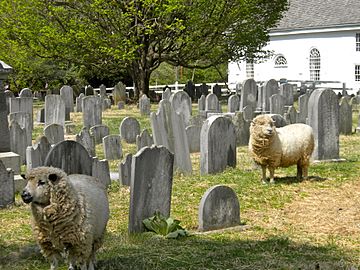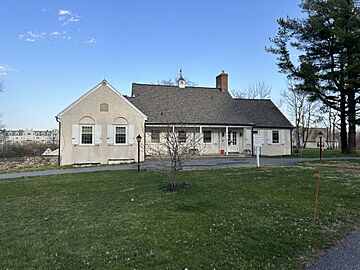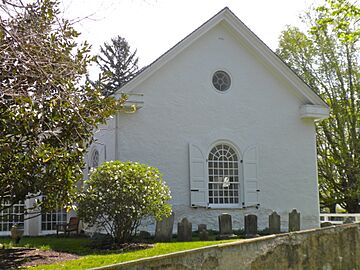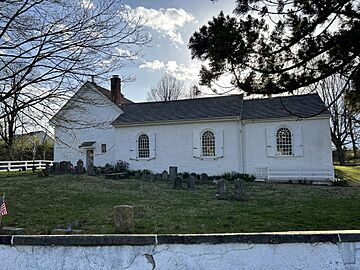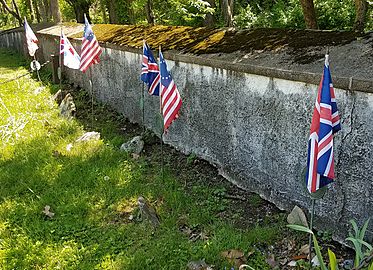St. Peter's Church in the Great Valley facts for kids
Quick facts for kids |
|
|
St. Peter's Church in the Great Valley
|
|

St. Peter's Church in April 2023
|
|
| Location | 2475 St. Peter's Rd., Malvern, Pennsylvania, U.S. |
|---|---|
| Area | 1 acre (0.40 ha) |
| Built | 1744 |
| Architectural style | Colonial |
| NRHP reference No. | 77001155 |
| Added to NRHP | November 21, 1977 |
St. Peter's Church in the Great Valley is an old and important Episcopal church located in East Whiteland Township, Pennsylvania. This area is a suburb of Philadelphia. The church started in 1704. It was a special mission of the Church of England back when Pennsylvania was a British colony. Today, it is part of the Episcopal Diocese of Pennsylvania.
Contents
The Church's Story: A Look Back
Early Days: The 1700s
The stone church building you see today was built between 1728 and 1744. It replaced an older wooden church from around 1710. The 1744 building was made of stone. It had a sloped roof and measured about 47 feet long by 28 feet wide.
St. Peter's During the American Revolution
During the American Revolution, the church became a hospital. Both British and American soldiers used it for care.
After the nearby Battle of Paoli in 1777, the British Army buried some soldiers here. They buried a British officer, possibly Captain William Wolfe. At least two other British soldiers were also buried. Five American soldiers who died in the battle were buried too. These soldiers from both sides are buried together. Their graves are along the old west wall of the churchyard. Small American and British flags are often placed there to honor them.
Growing Through the 1800s and 1900s
In 1856, a two-story section was added to the church. Later, in 1901, a Parish House was built. Over its long history, more than 36 missionaries and priests have led St. Peter's.
The church was changed a lot in the 1800s and early 1900s. But in 1944, it was carefully restored. The goal was to make it look more like the simple 1744 building.
In 1977, the original church building and its burial ground were added to the National Register of Historic Places. This list includes important historical places in the United States.
St. Peter's in the 2000s
In the early 2000s, the church congregation grew. They built a new parish center. This modern building has a worship space. It was designed to look like the old Welsh barns in the area.
Gallery
-
A 1743 gravestone at the church now housed in the Library of Congress
-
Common grave of British and American soldiers killed at the Battle of Paoli in the Revolutionary War




